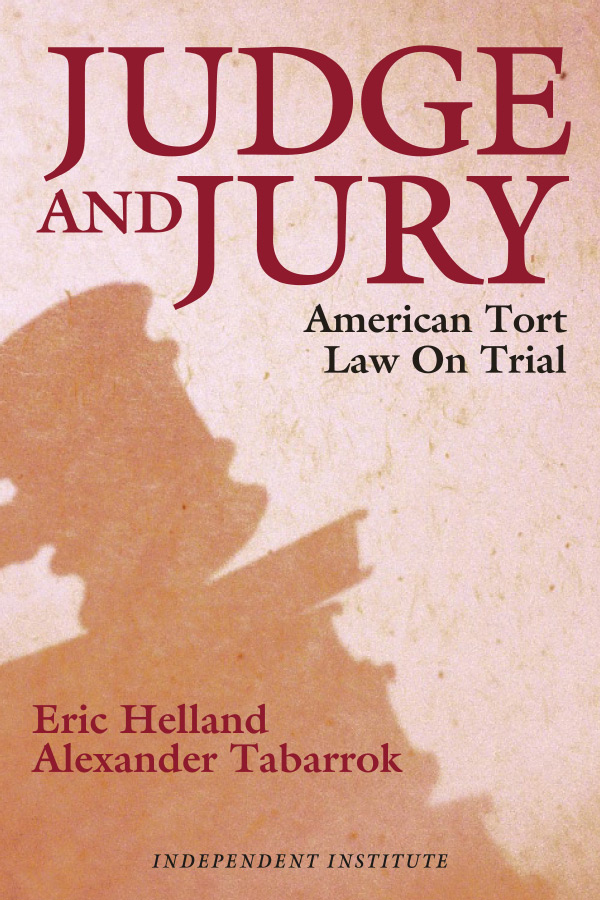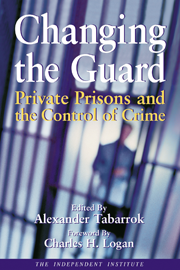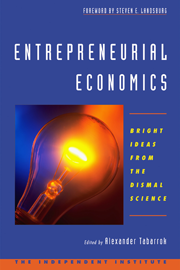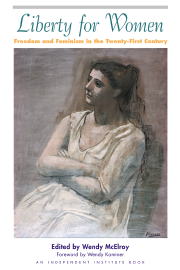In November of 1997 Congress passed the Food and Drug Administration Modernization Act (FDAMA). Section 111 of that Act offers drug sponsors six months of additional market exclusivity if those sponsors conduct pediatric studies on new drugs or currently marketed drugs still under some exclusivity provision.1 Section 111 sunsets in January of 2002; thus questions have arisen as to whether Section 111 should be reauthorized.
The pediatric exclusivity provisions of the FDAMA are modeled on similar provisions established in the 1983 Orphan Drug Act. Some background on that Act may be useful in evaluating Section 111. Beginning with the Kefauver-Harris Bill of 1962, which for the first time required drug sponsors to submit to the FDA clinical studies on effectiveness in addition to safety, the costs and the time necessary to receive a new drug approval rose dramatically. By 1983 the research, testing and development of a new drug could take up to twenty years, seven of which could be spent on the FDA’s approval of the New Drug Application. In addition, the total costs of bringing a new drug to market were in the hundreds of millions. Studies of the FDA showed that the increase in costs and time to market had resulted in substantial drug lag and drug loss. New and beneficial drugs were taking longer to reach the market, thus resulting in the death of many people who would have lived had the approval process been more expeditious, and many drugs were simply no longer being created because the costs exceeded any potential revenues. (See Tabarrok 2000 for review of many studies of the FDA)
Since the costs of obtaining FDA approval were the same regardless of whether the projected market was 20,000 patients or 2 million patients, FDA regulation has had especially negative consequences on drugs intended for small markets. The Orphan Drug Act was created in an effort to reduce drug loss in the area of rare diseases, “rare” defined as fewer than 200,000 cases in the United States. The Orphan Drug Act gave sponsors of drugs for rare diseases, tax breaks, subsidies and seven years of exclusivity, meaning that for seven years, no other company could obtain permission to market a similar drug.
The essence of the Orphan Drug Act is that rather than lowering the costs of producing new drugs the FDA increased the benefits by giving sponsors monopoly rights. The 7 years of exclusivity granted under the Act are considerably more generous than even a patent. A patent protects against competition from a drug with the same chemical structure, market exclusivity protects against competition from any drug with a similar effect. The FDA has thus barred firms from marketing a drug because it treated the same disease as a drug that the FDA has previously granted exclusivity under the Act.
The Act has generally been regarded as successful in producing more drugs to alleviate rare diseases (Arno, Bonuck and Davids 1995). Almost a thousand drugs have been granted orphan status. The number of such drugs is misleading, however, as many would have been produced even without the Act. The definition of “rare” is also potentially misleading. Millions of American suffer from cancer, so cancer is not rare, but a drug may be granted orphan status to treat ovarian cancer or cancer of the bladder. Thus, a drug used to treat ovarian and bladder cancer could be an orphan in each category, even though the total population served would be well over 200,000. Even more absurdly, the market for a drug may be divided into a prevention and a treatment category and if either of these categories is below 200,000, orphan status granted. Moreover, the same drug can be an orphan for more than one disease! It’s likely, therefore, that the Act has raised drug prices not only for true “orphan” diseases but for many others as well.
It’s interesting to note that when originally enacted the standard for orphan status was “no reasonable expectation that the costs of development will be recouped from US sales.” Even this standard suggested that many drugs would be labeled “orphans” even though they would be profitable without that designation, since worldwide sales could well exceed US sales. To prove that there was no reasonable expectation of cost recoupment, pharmaceutical firms were supposed to submit financial data to the IRS. The pharmaceutical industry didn’t like this provision, however, so it lobbied to have the requirement weakened. In 1984 the standard for orphan designation was weakened to fewer that 200,000 potential US patients at the time of the request for designation of orphan status. The latter clause was important since in the early years of AIDS, when the disease affected relatively few people, it allowed many AIDS drugs to be designated as orphans despite the fact that the market for these drugs was expected to grow very rapidly. It will surprise many to learn, for example, that AZT was designated an orphan drug despite the fact that AZT has generated billions of dollars of sales. Initially, Congress had also restricted the exclusivity to drugs which could not be patented; that restriction was dropped in 1985. Thus, over time the Act has become significantly more beneficial for US drug manufacturers. Not surprisingly, the Act is widely supported by the drug industry.
The increase in the incentive to produce new drugs may outweigh the increases in prices caused by the Orphan Drug Act. Unfortunately, no major cost-benefit analysis has yet been performed. It could well be the case that the true number of new orphan drugs created is small relative to the increase in prices.
The pediatric exclusivity provision of Section 111 sought to treat a problem similar to that of orphan drugs: the lack of pediatric labeling for most drugs. Pharmaceutical firms have been reluctant to perform clinical trials on children not simply because the pediatric market is often small relative to the adult market, although this undoubtedly plays a role, but also because of the difficulty of obtaining informed consent. Phase I clinical trials, for example, are meant to determine a drug’s basic properties and safety profile in humans. Studies in this phase are conducted on healthy individuals who are typically paid to participate in the trial. Substantial ethical concerns are raised by the participation of healthy children in these trials, especially when such children are not old enough to give informed consent and when any payment may be made to the child’s parents. Pharmaceutical firms are also concerned about liability.
To overcome these concerns, Section 111 offers pharmaceutical firms six months or market exclusivity on top of any patent rights or other monopoly rights granted under the Patent Term Restoration Act (Waxman-Hatch Act) or under the Orphan Drug Act. As with exclusivity under the Orphan Drug Act, grants of pediatric exclusivity are liberal. The grant of exclusivity, for example, is for the adult version of the drug and not just the pediatric formulation. Pediatric information is not useful for all drugs (e.g., pediatric dosing information would not be useful on a drug intended to treat Alzheimer’s), thus only those drugs for which the FDA believes pediatric information would be worthwhile are eligible for exclusivity under Section 111.2 Nevertheless, the Act contains no cost-benefit provisions that would indicate when the value of pediatric information justifies the higher prices created by the extension of monopoly rights. The Act, for example, may sometimes require millions of adults to pay substantially higher prices in order to create pediatric information which is of little value to a comparatively few patients.
Moreover, the six months of additional protection extends to the active moiety of the drug. In non-technical terms, an acceptable pediatric study of any version of a drug qualifies that drug for exclusivity on all versions. If a drug is tested as a cream, for example, the extension under pediatric exclusivity also applies to the drug in spray, oral tablet or injectable form. As with the Orphan Drug Act, pharmaceutical manufacturers have lobbied to extend the monopoly rights under Section111. For example, under the interpretation of the Act promoted by pharmaceutical firms the monopoly rights granted under Section 111 would apply not simply to any version of the drug currently existing but any version created in the future. Pharmaceutical firms have also pushed an interpretation of the Act which would extend monopoly rights to combination products involving the drug study for pediatric purposes.
It should be noted, that the pediatric studies necessary to qualify for the six-month extension of monopoly rights do not need to demonstrate safety and efficacy in children nor need they be sufficient to establish pediatric labeling. The lack of such requirements is probably wise given the difficulties with conducting clinical trials on children, as indicated above, and given that such trials would in part be a costly duplication of the adult trials. Nevertheless, the lack of well-defined standards for the required studies once again raises the question of whether the value of the resulting studies exceeds the costs to adult drug consumers.
Both the orphan Drug Act and the pediatric exclusivity sections of the FDAMA raise issues in the ethics or redistribution. In essence, Section 111 is a cross-subsidy from sick adults to sick children, just as the Orphan Drug Act is a cross-subsidy from people who are sick with common diseases to people who are sick with uncommon diseases. Although the utility of public policies designed to increase pediatric information and the number of orphan drugs is beyond question, it is not obvious why sick adults and sick people with common diseases should exclusively bear the burden of such policies.
A final wrinkle. In December of 1998 the FDA promulgated a final rule, “Regulations Requiring Manufacturers to Assess the Safety and Effectiveness of New Drugs and Biologic Products,” which took effect in April of 1999. If Section 111 is the carrot, then the FDA’s Final Rule is the stick motivating pharmaceutical firms to complete pediatric studies (Karst 2000). The final Rule is intended to “complement” Section 111. In effect, if due to cost or other considerations adequate clinical trials are not completed under Section 111, the final Rule gives the FDA authority to require that such studies be conducted. Importantly, the final Rule can be applied to off-patent drugs in addition to drugs currently under patent or other monopoly right. The legality of the Final Rule is under question and some have suggested that the FDA would or should trade support for Section 111 in return for industry support for the Final Rule or its equivalent (Karst 2000). Given the questionable value of both Section 111 and the Final Rule a trade in which both were retained would be undesirable.
Notes
1 Under some conditions the effective exclusivity extension can last up to a year.
2 Technically, the FDA must request a sponsor to perform pediatric studies, but sponsors may initiate the request process.
References
Arno, P.S., K. Bonuck, and M. Davis. 1995. Rare Diseases, Drug Development, and AIDS: The Impact of the Orphan Drug Act. The Milbank Quarterly 73 (2): 231-52.
Karst, K.R. 2000. Pediatric Testing of Prescription Drugs: The Food and Drug Administration’s Carrot and Stick for the Pharmaceutical Industry. American University Law Review 49:739-72
Tabarrok, Alexander. 2000. Assessing the FDA via The Anomaly of Off-Label Drug Prescribing, The Independent Review 5 (1): 25-53. Available online at http://www.independent.org/publications/tir/article.asp?issueID=21&articleID=240. Accessed December 123, 2004.












